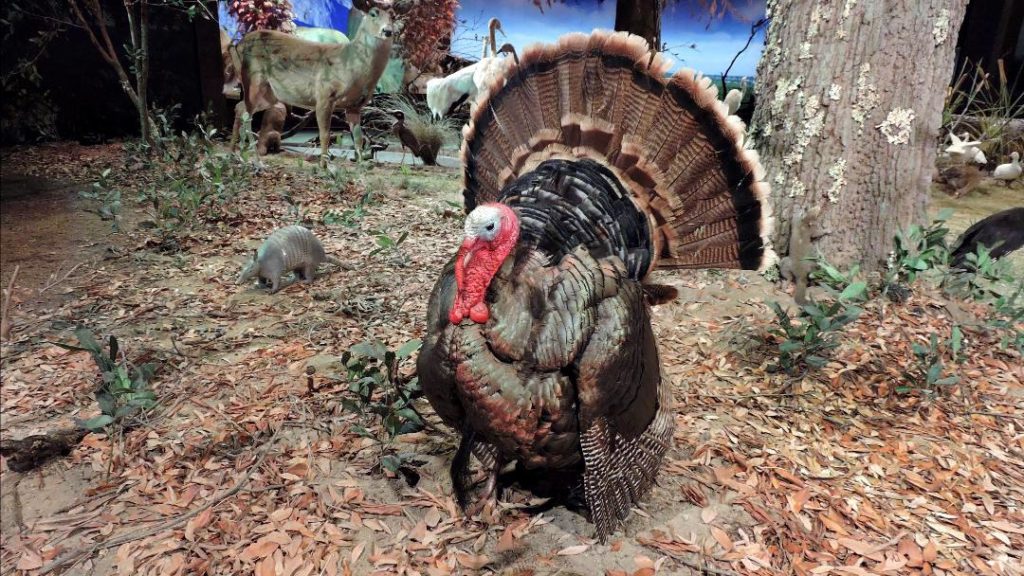
Oven roasted or fried? Stuffed or unstuffed? How do you prefer your dinosaur? Did I say dinosaur? I meant turkey…or did I? In truth, that turkey on your table is or was in fact a real-life dinosaur. Turkeys are theropods, just like the meat-eating dinosaurs you so love to visit at the Museum. Paleontologists have known for years that modern birds are the direct descendants of feathered dinosaurs. These denizens of our dinner tables may not look as imposing as a T. rex, but anatomically–and most likely behaviorally–they are very much alike.
This revelation may come as a surprise to many of you, but not to me. Even before I knew of the dinosaur/bird connection, I realized some of these creatures were capable of what I would describe as dinosaur-like aggression. I am an animal lover and would never seek to purposely agitate any animal, but I’ve had many encounters with birds such as geese, swans, roosters and turkeys that have run afoul. I try hard not to anthropomorphize animals but some of these creatures seem more like the calculating velociraptors of Jurassic Park than the harmless creatures we actually know them to be.

Here are a few of my velociraptor-like encounters with birds: As a toddler, I was mobbed by a pack of ducks in Hermann Park; they wanted ALL the treats. As a teen I often took refuge in a horse stall to escape the wrath of the resident rooster, who would then wait outside until someone showed up to free me. Enormous black swans once taught me a lesson about getting too close for a picture by giving me an epic beat down, all while I was wearing my formal gown. Last but not least, I have been brought to near heart failure by the unexpected chattering from wild turkeys, who seem to be stealthier than well-trained soldiers.
To be fair to the birds, these instances were almost always of my own doing, but they do make for amusing stories. To that end, there are some fun videos showing the interactions between turkeys and unsuspecting humans. People are almost always surprised that these creatures can be so assertive.
But, back to Thanksgiving! It turns out that of all the modern birds, in all the world, turkeys and chickens are the most closely related to dinosaurs. So, provided you’re into eating turkey on Thanksgiving, you have a great opportunity to do some scientific exploration. Once you have eaten everything and only the carcass remains, see if you can find the furcula, commonly known as the wishbone. This is a feature that both turkeys and theropod dinosaurs share. They share quite a few other similarities as well. Look at the diagrams to see what else you can find. The next time you snap a wishbone in half, give a little thought to how hard it would be to snap a T. rex furcula. Better yet, invite someone to make a wish on the furcula with you. They will either think you are a genius or nuts. Happy Thanksgiving!
The Houston Museum of Natural Science will be closed on Thanksgiving to observe the holiday, but we will be open Friday, November 29. Plan your visit here.

